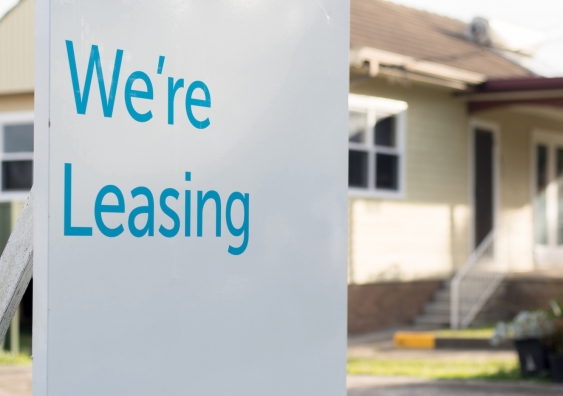Expanding minimum standards for rental properties could improve conditions for renters shivering through the winter.
Australian homes can get particularly cold during winter months. And if you’re a past or present renter, chances are you’ve been uncomfortably cold in your rental when temperatures drop.
You may have asked, or considered asking, your landlord if they could please install something with more grunt than a little box heater. But are they obliged to help you stay warm at home?
Dr Chris Martin, Senior Research Fellow from t at Â鶹Éçmadou Arts, Design & Architecture, is a tenancy law expert. He says it comes down to how cold your rental is, and for now, which state you live in.
Media enquiries
For enquiries about this story and interview requests, please contact Ben Knight, News & Content Coordinator, Â鶹Éçmadou Arts, Design & Architecture.
±Ęłó´Ç˛Ô±đ:Ěý(02) 9065 4915
·ˇłľ˛ąľ±±ô:Ěýb.knight@unsw.edu.au
Premises must be fit for habitation
Residential tenancy legislation in most states does not specify that a fixed air-conditioning or heating device needs to be installed at a rental property. However, the premises must generally be habitable.
“While the exact wording differs between different jurisdictions, the habitability obligation essentially means landlords must ensure the premises can be lived in safely and comfortably,” Dr Martin says. “If it takes an air-conditioner or a heating unit to make a particular premises habitable, that’s what’s required to meet that obligation.”
A 2022 report by the tenancy advocacy organisation Better Renting found that – the minimum temperature that the World Health Organisation regards as safe for indoor environments.
“If premises are so cold that they are unsafe or unbearably uncomfortable, then the premises are not fit for habitation, and the landlord is in breach of the tenancy agreement,” Dr Martin says. “Likewise, if a premises is too hot, it too can also be unsafe or so uncomfortable that it is in breach of the tenancy agreement.”
Dr Martin says tenants who find their properties unsafe or uncomfortable due to the cold could approach their landlord to install a fixed heating unit or insulation to remedy the breach in the first instance.
If the landlord does not take action, tenants can apply to the tribunal for a breach of agreement and seek an order that the landlord make the premises habitable. Tenants might also seek remedies from the landlord such as a rent reduction for not being able to use part of the premises due to the cold or compensation for falling ill because of the cold.
“Even though the habitability obligation is good in its wide coverage and can be applied to many circumstances, it does mean that tenants may have to have an argument with the landlord about what’s needed to meet the obligation,” Dr Martin says. “That can be difficult when tenants are in this asymmetrical relationship where their landlord holds most of the power.”
If it takes an air-conditioner or a heating unit to make a particular premises habitable, that’s what’s required to meet that obligation.
Raising minimum standards for rental housing
In recent years states and territories have been amending their tenancy laws to include that landlords must ensure their properties meet for tenants to live in. While most focus on spelling out the bare minimum, such as making sure the premises are structurally sound or have hot and cold running water, some jurisdictions are doing more than others.
“For example, in New South Wales, the minimum standards set out some examples of what is required by the general habitability obligation,” Dr Martin says. “But Victoria’s approach to minimum standards is different, because it is deliberately setting higher standards, and requiring landlords to actively improve properties, including in relation to heating.”
in the main living space that meets energy efficiency requirements. Consultations are being held about that would require a fixed cooling unit and higher energy and water efficiency standards.
Dr Martin says other states and territories should consider introducing similar heating requirements in a phased approach into their own minimum standards. However, the improvements could ultimately mean higher rents for tenants.
“Deliberately raising the standard of rental properties in this way would likely impose a cost, and it’s reasonable to expect that cost to flow through to higher rents,” Dr Martin says. “But if the improvements also focus on energy efficiency, there could be cost savings for tenants from the improved thermal performance of their homes.”
Abolishing no-grounds evictions
Another fundamental improvement in tenancy law is needed to strengthen renter’s legal security alongside raising minimum standards – ending evictions without grounds.
“Abolishing no grounds terminations is the crucial reform that every other reform depends on,” Dr Martin says. “That is the one that gives tenants reasonable security to assert any of their rights like asking for a simple repair and know they aren’t going to face repercussions from their landlord.”
The Minns Labor Government made a but has . Meanwhile, in Victoria, no-grounds evictions can still be served at the end of the first fixed term.
Dr Martin says reforms should go one step further and ensure landlords can’t unreasonably terminate tenancies without grounds at the end of any fixed term or during periodic leases.
“No grounds eviction give cover to the unreasonable landlords who routinely exploit the legal insecurity of their tenants,” Dr Martin says. “It should be a priority of every jurisdiction to eliminate no-grounds terminations to protect renters and their rights.”









